
Designed to race in the Big Class with Britannia, Fife’s 1895 design for Ailsa was too big for the Fairlie yard and she was built by A & J Inglis in Glasgow.
The Fife Archive is predominantly a technical archive and as such contains little material relating to the management of the yard, its employees, finances or correspondence with customers. Its core wealth lies in the technical drawings and the supporting data for these.
The main collection of drawings spans the period from 1888 until the closure of the yard in 1984; in Yard Number terms from No. 188 to No. 896. This series of drawings is preceded by a small number of earlier drawings. The earliest vessel for which there is a drawing in the collection is Gleam of 1832, but this drawing is not contemporary with her construction. The earliest drawing that is contemporary with the construction of its subject is the Lines Plan of William Fife II’s Condor of 1878.
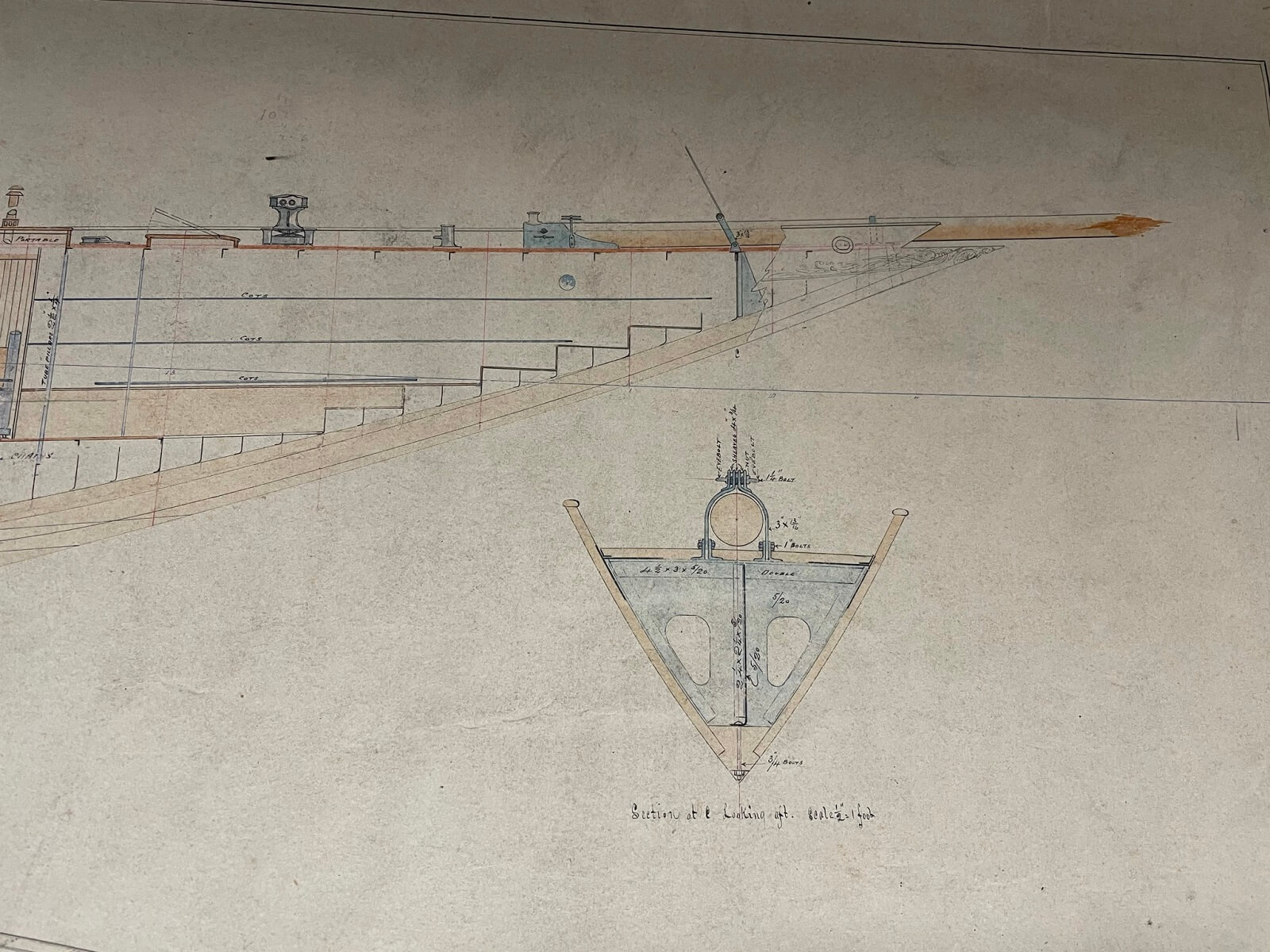
Calluna was Fife contribution to the 1893 Big Class where with Britannia, Valkyrie II and Satanita she was part of one of the greatest racing fleets ever seen.
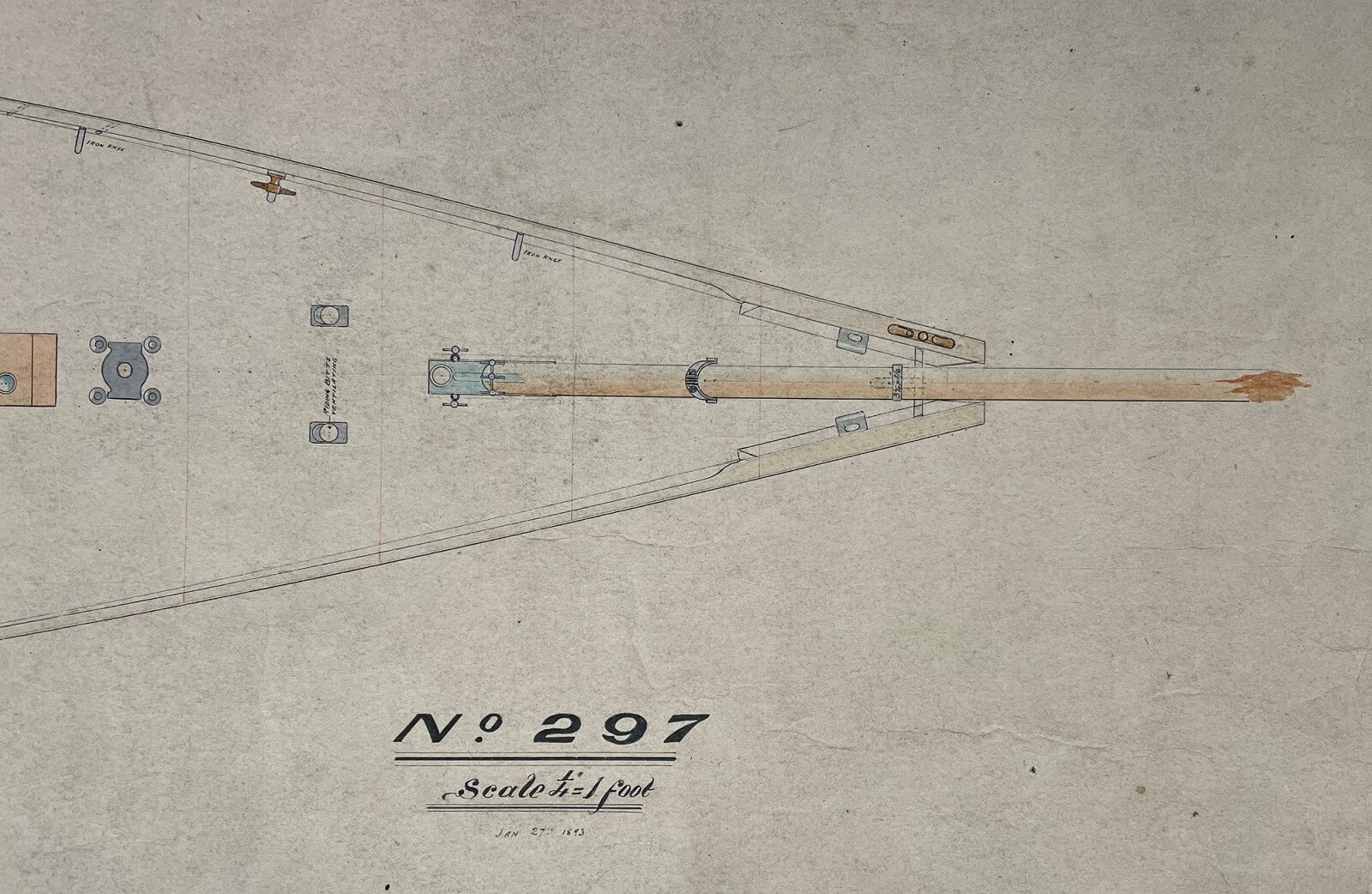
The details of Calluna’s composite construction reveal the immense care need in the design process to handle the vast stresses in these immense racing cutters.
Like most pre-computer age drawings, the Fife drawings represent an economy of drawing time. A typical basic set of drawings will be contained on just three sheets: a lines plan, a sail/rigging plan and a sheet with a longitudinal section, deck plan and general arrangement. This last multi-drawing sheet will contain construction, fit out and if relevant technical installations. For classed yachts there will also generally be a Mid-Ship Section. Thereafter there may be drawings of particular features, tenders, and new sail plans as yachts were updated.
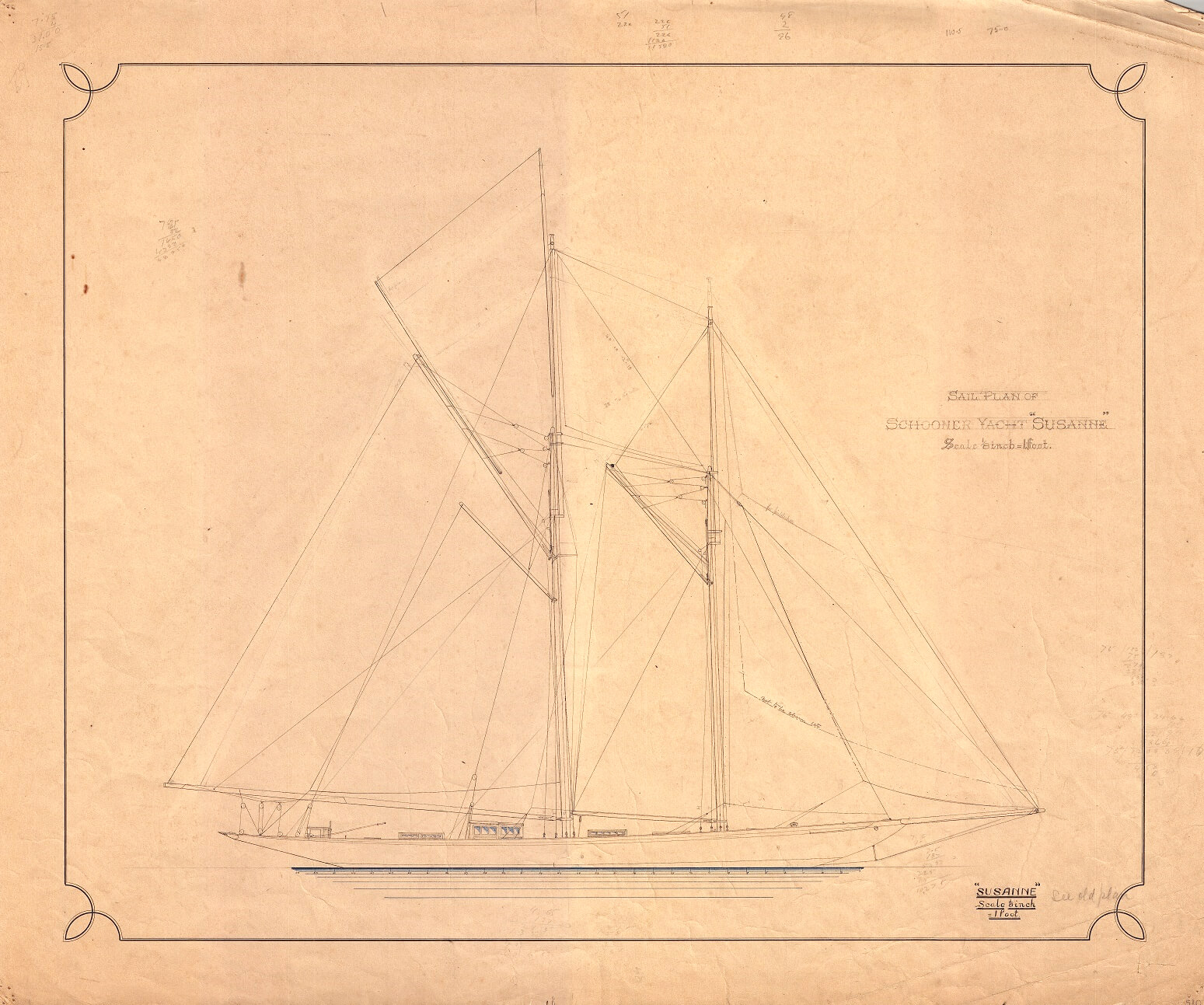
With his 1904 design for Suzanne, Fife created one of the most iconic schooner designs of all time.
The technical drawings are complimented by Offset and Calculation Books. The Offset Books set out the offsets as recorded from the loft floor and are a far more reliable record of a vessel’s eventual lines than the lines plans derived from the half models carved by William Fife. The Calculation Books mainly set out ballast calculations, but also give key evidence for the relationship between different designs where a new design was created by scaling a previously existent one. The collection holds the majority, but not all these books.
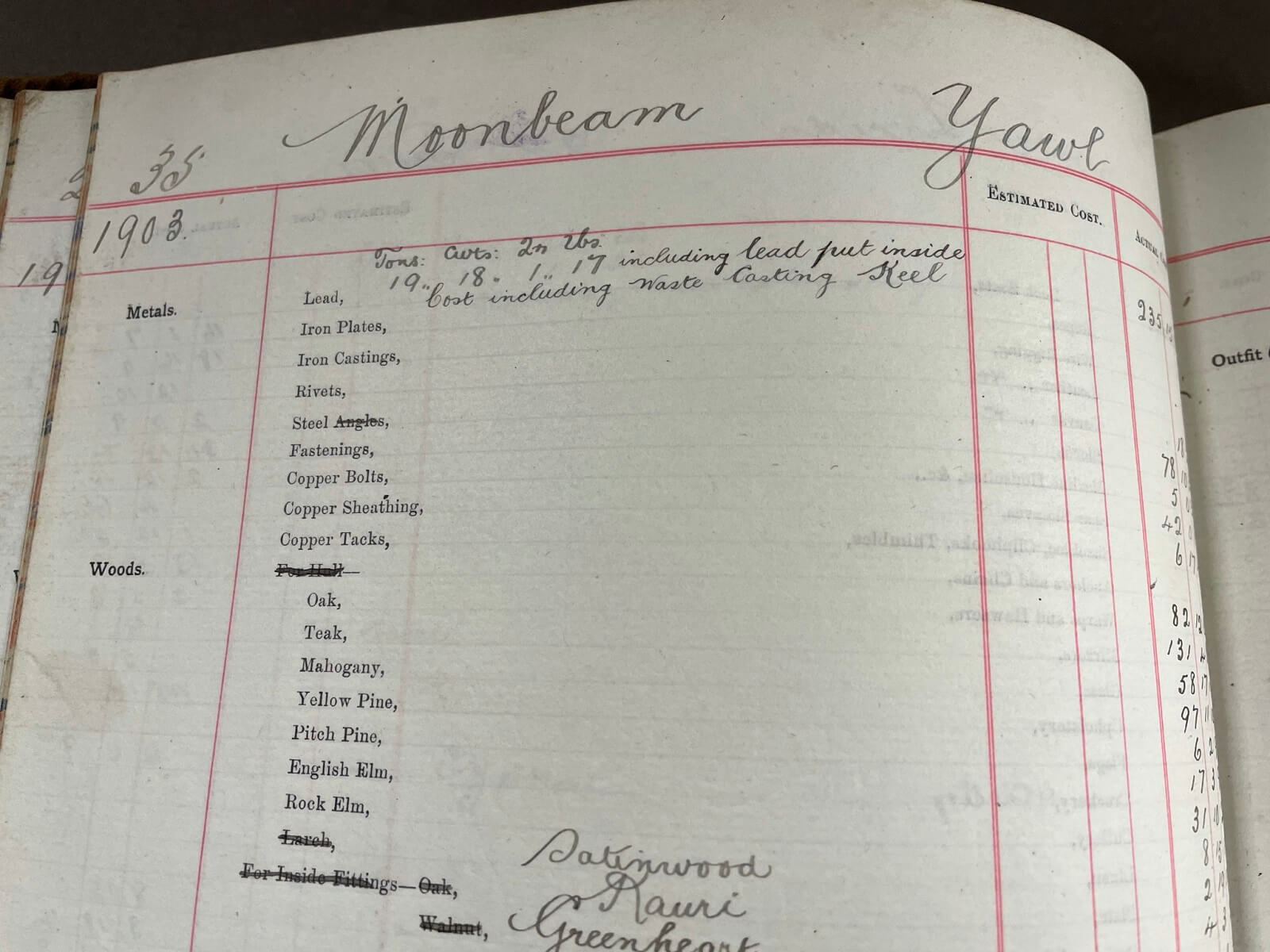
The cost books give us not only information on what Fife’s clients paid for their yachts but also all the materials used.
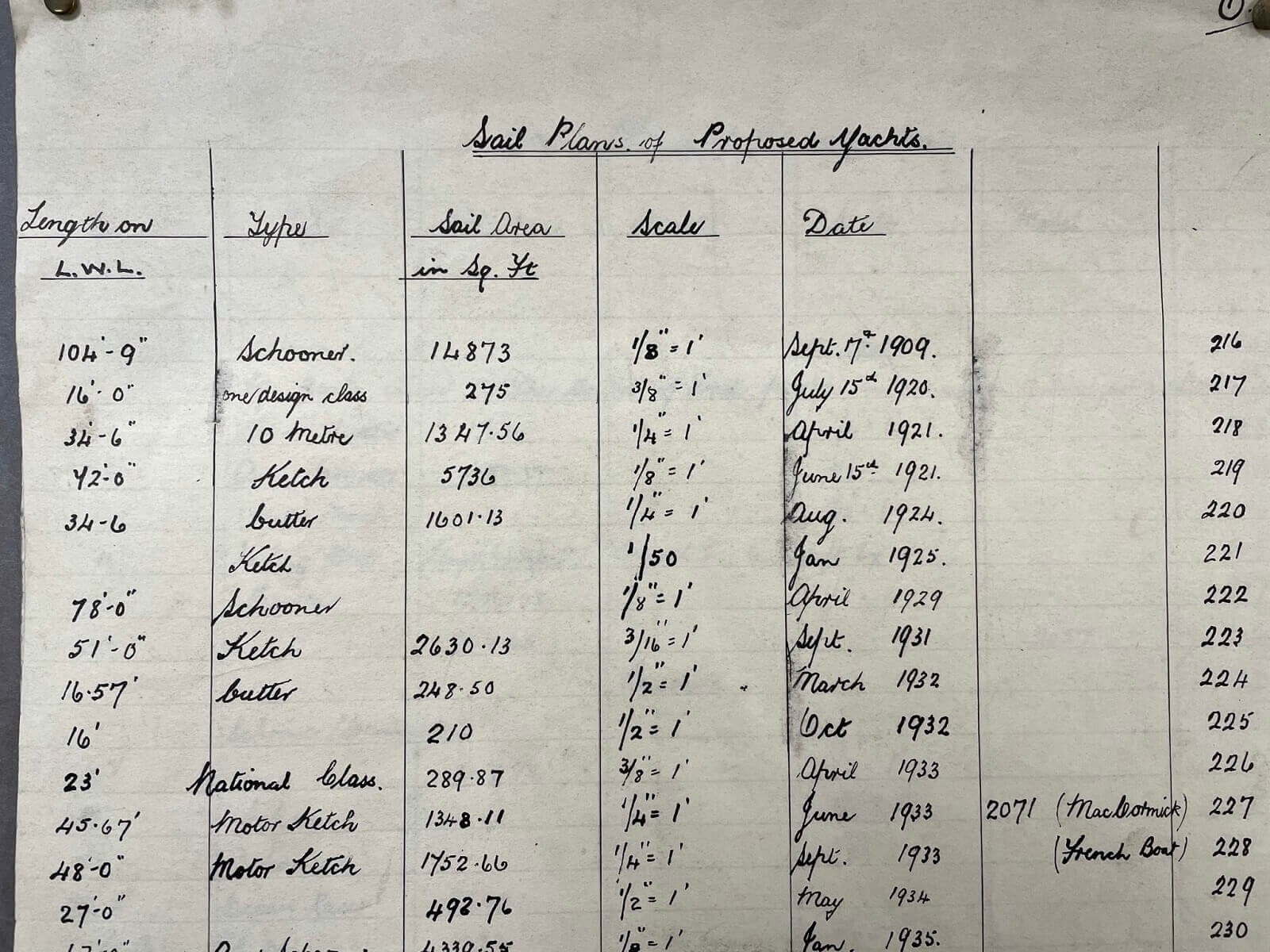
As well as the drawings of yachts built, the Fife Archive also contains many drawings of yachts that were designed but never built giving us tantalising possibilities.
The Cost Books give further insight into the design of individual vessels: they set out not just the total and frequently the estimated cost, but also significant detail on the materials used.
Intriguingly the collection also includes an extensive collection of Proposed Designs which were never built, offering the alluring possibility of building anew an original Fife design.
The Fife Yard’s wartime production is extensively covered, with a significant collection of World War I Admiralty drawings. This theme is picked up again in the 1950s and 1960s when the yard built many naval vessels.
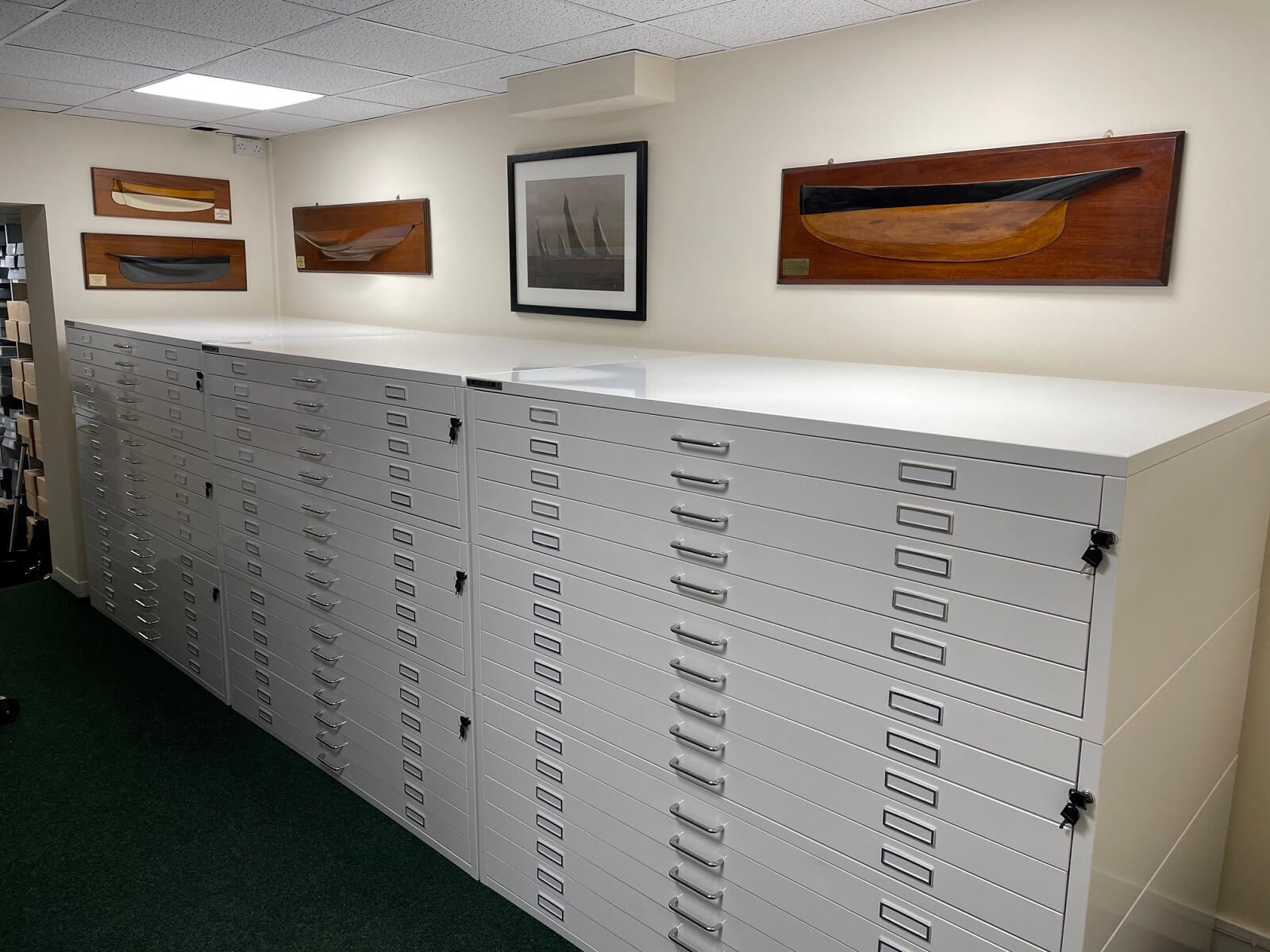
Housed in bespoke plans chests, the collection is held secure.
The Fife yard built a limited number of yachts to the designs of outside designers such as G. L. Watson, Alfred Mylne and Laurent Giles, and these are included in the main collection arranged by Yard Number. Like most designers the Fife yard also acquired drawings of yachts by other designers and this section of the collection includes work by John Alden, Johan Anker, John Bain, Allan Buchanan, Starling Burgess, Camper & Nicholsons, Robert Clark, Gustav Estlander, Nat Herreshoff, A. E. Payne, Arthur Robb and many others. Perhaps the most intriguing of these drawings is the original Sail Plan for the famed Nova Scotian racing schooner Bluenose a Canadian icon of the 1930’s.
Associated Items
As well as material that originates from the Fife yard, the collection also includes many items relating to William Fife-designed and built yachts from other sources.
The Andrew Bain Papers
A particularly rich collection are the papers of Andrew Bain, the second owner of the legendary Bloodhound who was a close friend of William Fife II and commissioned William Fife III to design the equally important Hatasoo, the 17/19ft racing lugger of such advanced design that she broke the class.
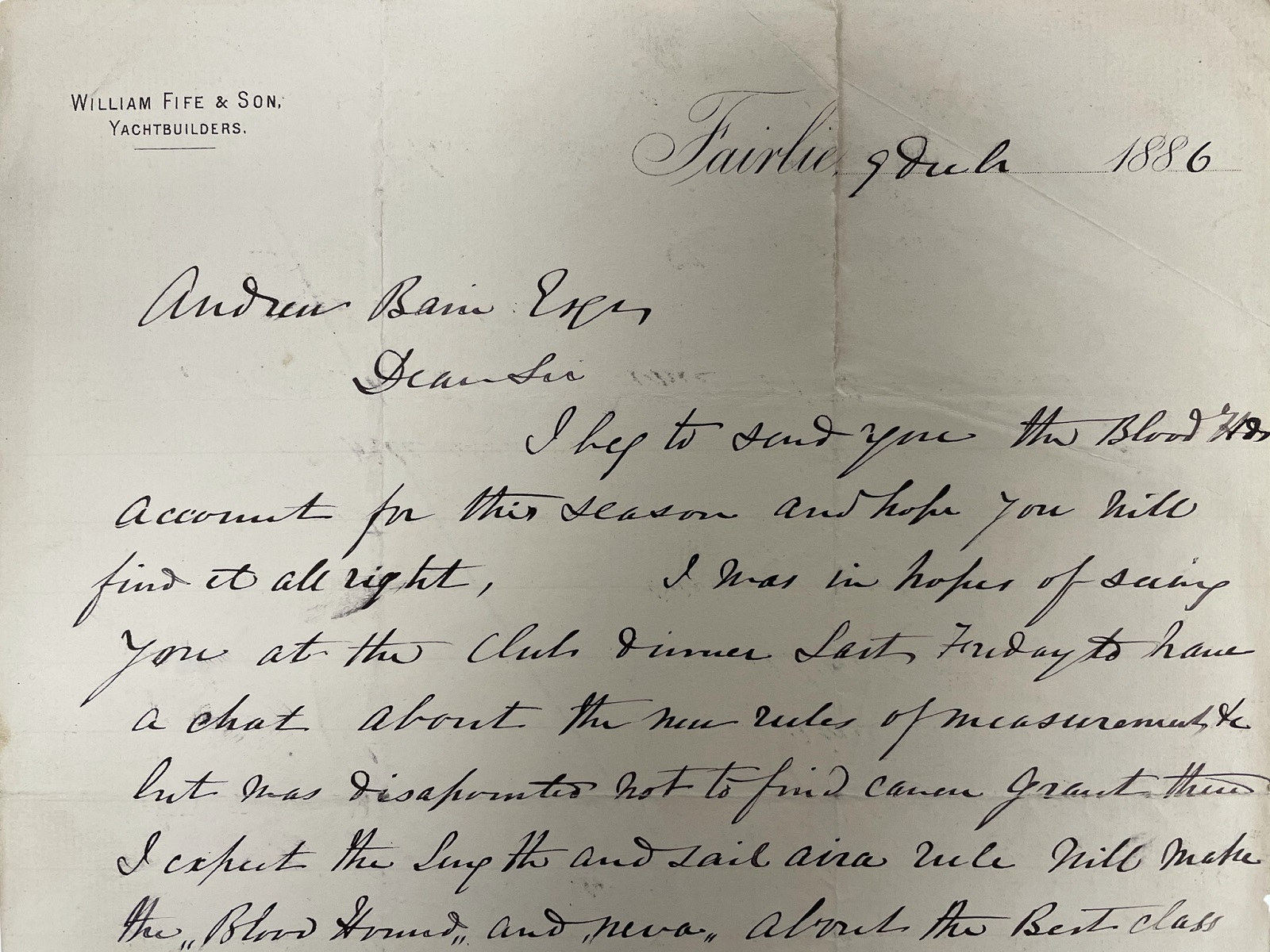
Leading yachtsman Andrew Bain was a client and friend of William Fife II and it was he who organised the presentation to Fife II of his portrait by leading Clyde yachtsmen.
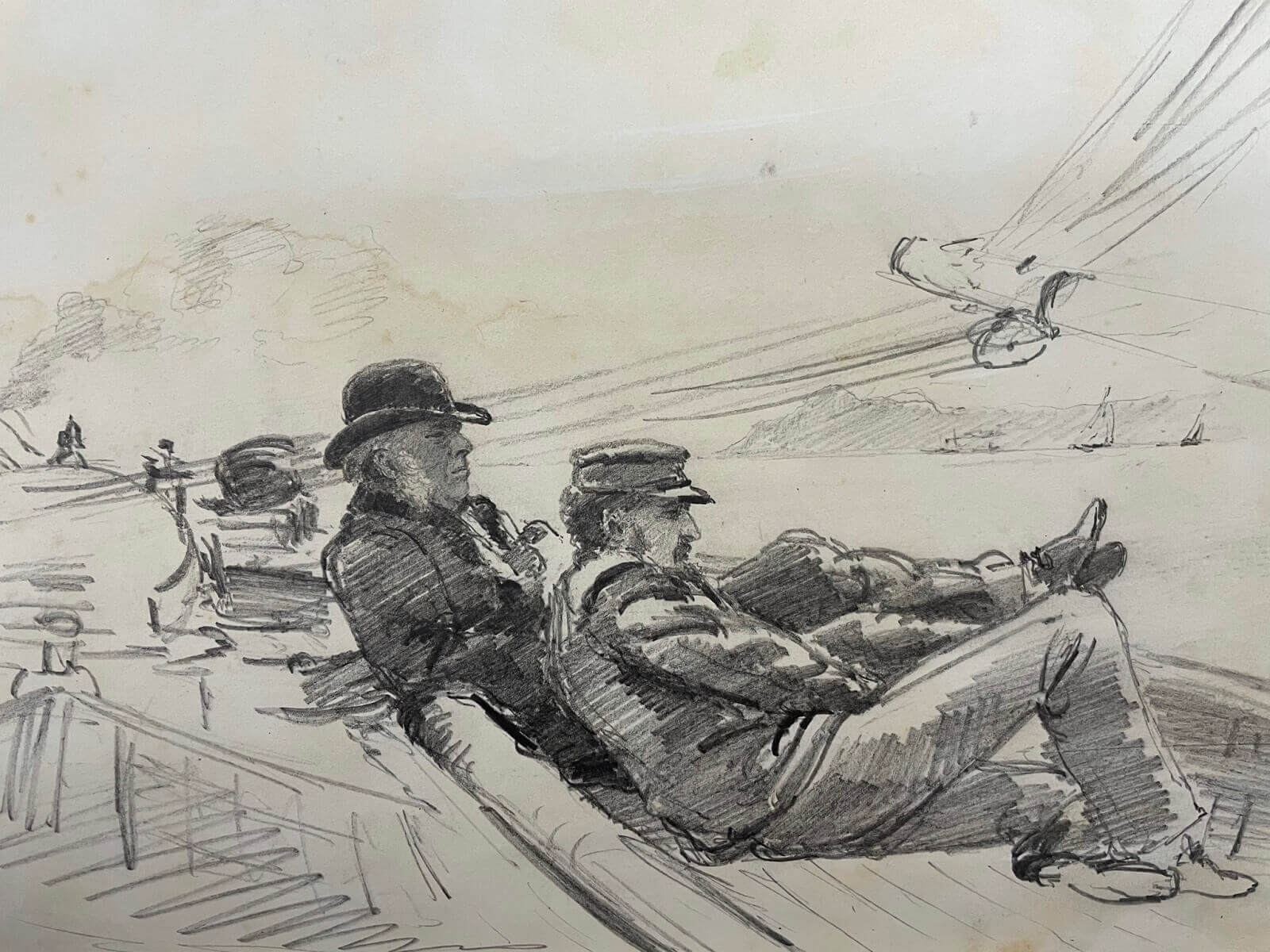
A sketch by Robert Cree Crawford of Andrew Bain and William Fife II (left) aboard the great 40 tonner Bloodhound, one of Fife II most successful designs.
The quality of the early illustrations are a particular feature of the Bain material. The noted artist Robert Cree Crawford was a frequent guest aboard Bloodhound and his sketches include William Fife II whose portrait he would go on to paint. Bain also collected photographs of significant yachts and these are pasted into the logbooks giving us a unique opportunity to see images of Fife yachts and Clyde yachting that exist nowhere else.
Corona’s Guest Book
The career of the great 19 Metre Class Corona is recorded in her guest book. Satisfyingly it reveals that William Fife III was aboard when Corona won the Coronation Kings Cup at Rothesay on 1 July 1911. Noting her dismasting on the Clyde on 9 July 1912 it includes the valedictory comment that this occurred whilst leading ‘by 4 mins in 2nd round.’
Visits to Cowes, Le Havre and Kiel are also recorded along with visits from many of the prominent British and international yachtsmen including Cornelius Vanderbilt.
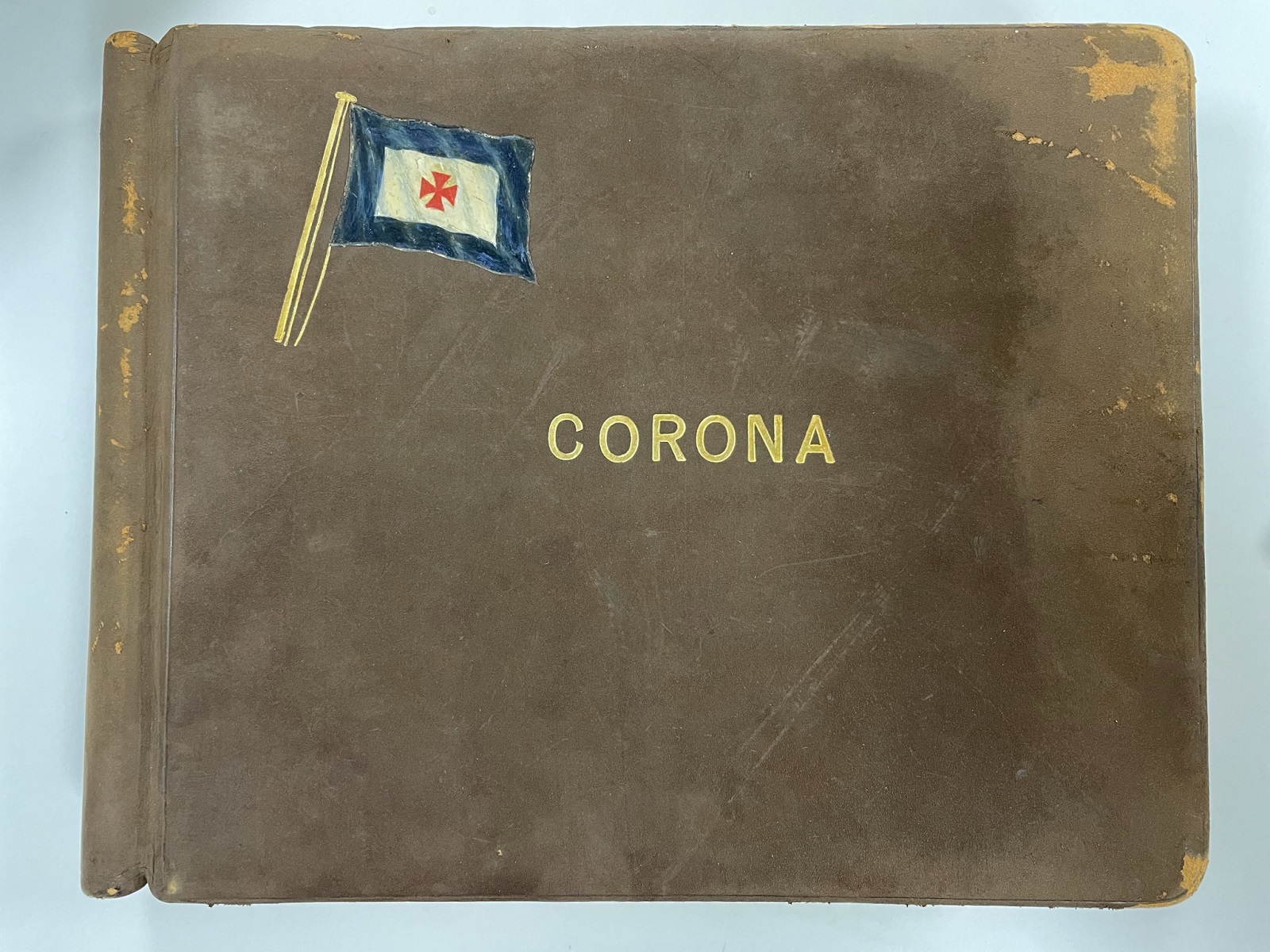
Complete with her racing flag on its cover Corona’s visitors book records her key races and the many prominent yachting personalities who raced aboard.
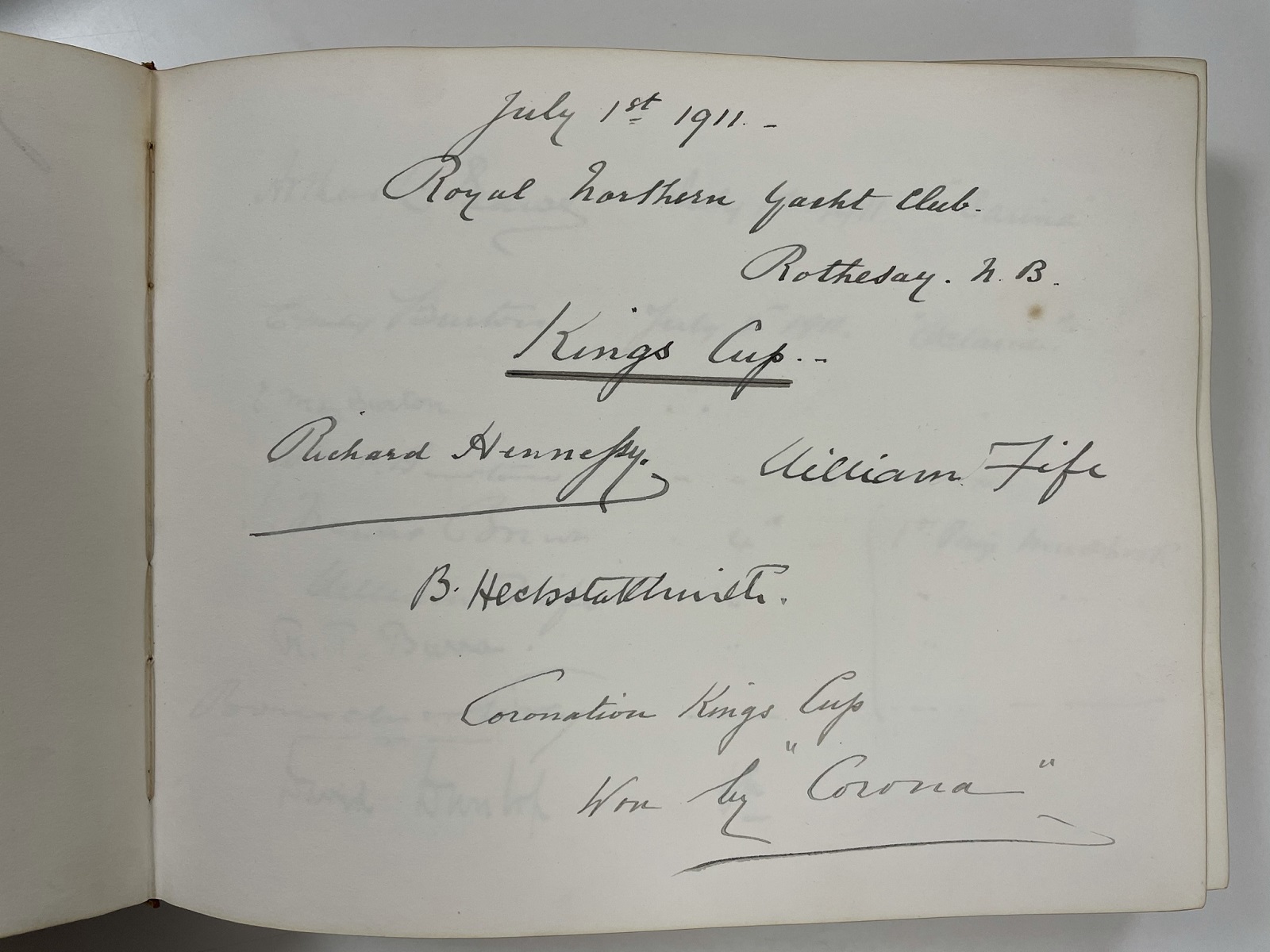
Richard Hennessy has had the pleasure of recording Corona’s 1911 King’s Cup victory with both her designer William Fife and yachting guru Brooke Heckstall-Smith on board.
Single items such an 1894 letter from Archie Hogarth who would go on to skipper Sir Thomas Lipton’s first Shamrock in the America’s Cup report to the owner of a new yacht building at the Fairlie yard that ‘Mr Fife says she will be in the water before the end of this month’ adding that ‘I think she will if the good weather continues’. But however imminent the launch he was also forced to report that the spars were not started, that ‘Mr Fife was telling me that he did not know the colour of paint you wanted for her topsides whether black of white’ and finally that he needed to know the name of the yacht ‘to get the tailor to put it on our jerseys.’
All these items give us valuable insights beyond the technical records of the yachts themselves, helping us to understand the work and social environment in which the existed.